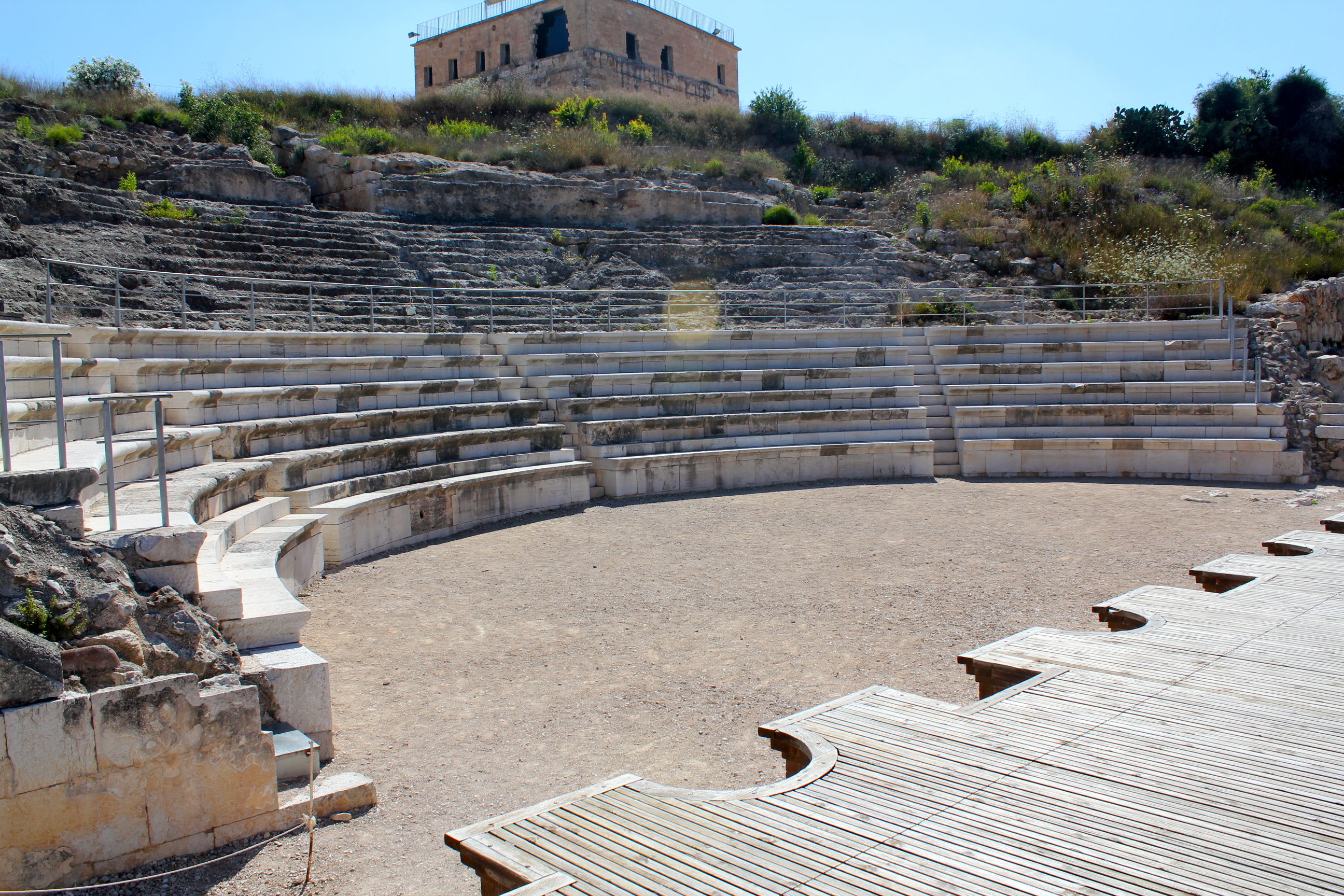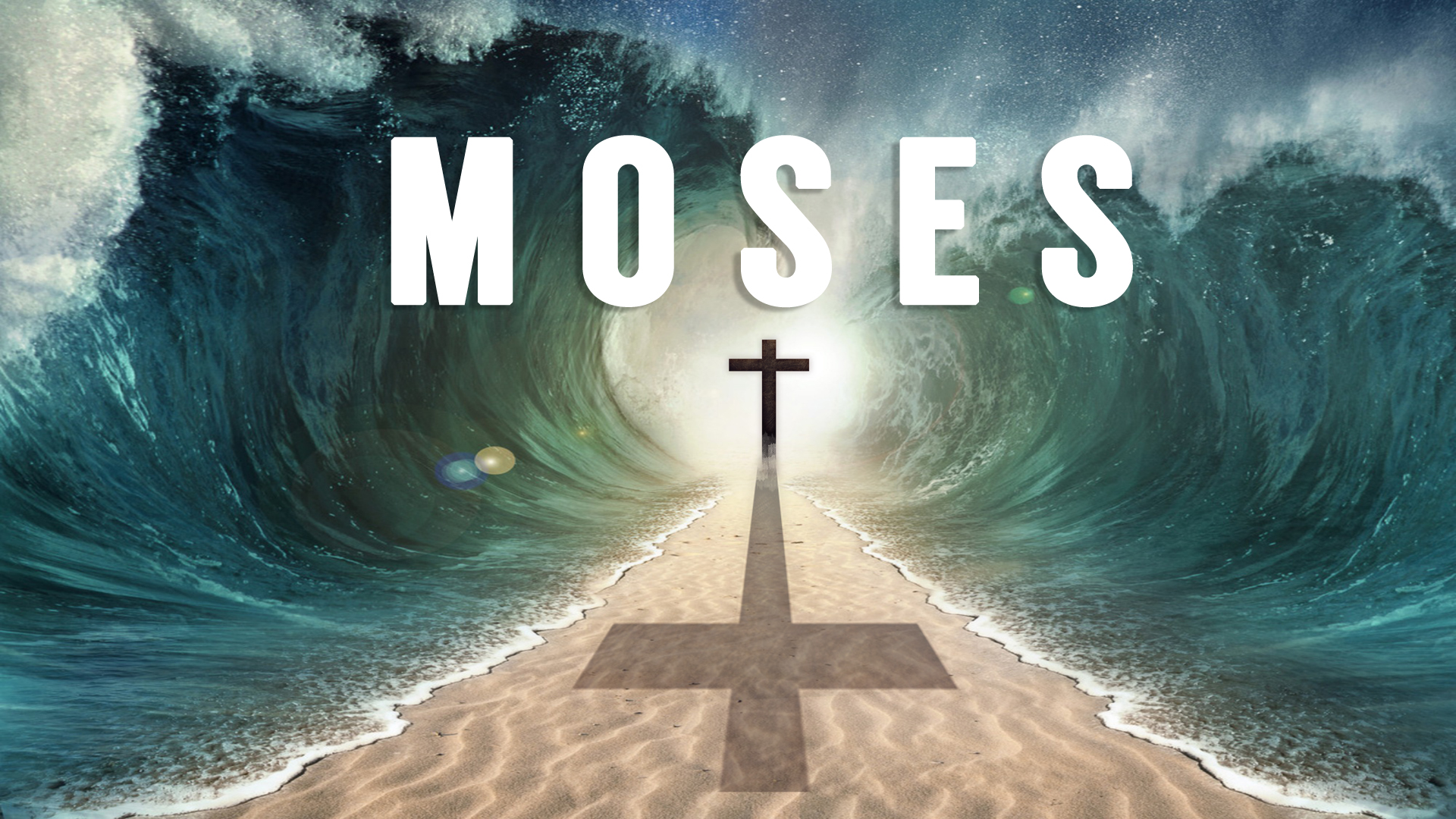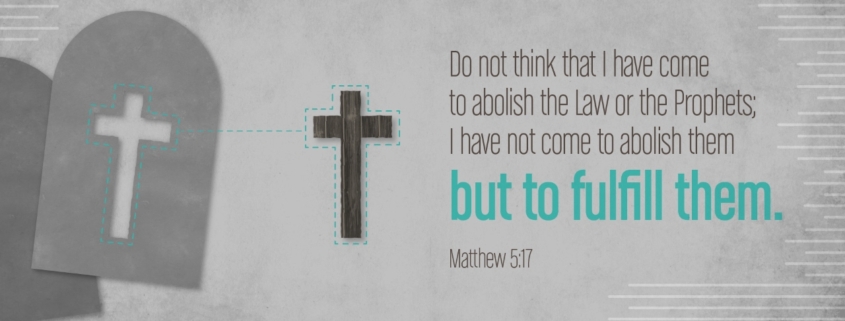Ever wonder exactly why Jesus chose to ride into Jerusalem on Palm Sunday on a donkey? It was no accident. In this video, filmed on location at the Church of All Nations in Jerusalem, Cale explains how Jesus fulfills Old Testament prophecies as a new and greater Solomon, the “Son of David”, not only as Israel’s King, but also as Messiah.
Posts
Dr. Larry Hurtado, writing on his personal blog:
“The leukemia (AML) for which I was treated here last summer has reactivated, after some 9 months of remission. The further treatment options are quite limited, and may only be palliative care of various sorts. In any case, I am now fully occupied with exploring various arrangements for the situation and aftermath of my death on my wife and others. So, I shall have no time for blogging or my scholarly work. Signing off unless further notice. I hope that the archives on the site will continue to prove useful to interested readers.”
This is very sad news indeed. Dr. Hurtado is truly a giant among New Testament scholars. His publications on Christian origins are remarkable — of special note are his works explaining how worship of Jesus as divine was not a late development, but indeed reaches back to the dawn of Christianity. He also has some great material on early artifacts of the Faith; specifically, the early Christian manuscripts. Please pray for Dr. Hurtado and his family at this most difficult time.
Happy Easter! Christ is Risen!
Hope you enjoy this video we recently filmed on our recent Faith Explained Pilgrimage to the Holy Land. At the most important Church in the world, the Church of the Holy Sepulchre, we briefly consider some of the compelling evidence for Jesus’ Resurrection.
Interested in joining us for our next pilgrimage? Reach out at TheFaithExplained.com/contact, and we will keep you updated with all the latest info on our upcoming tours!
Here’s my December article for Catholic Answers Magazine. Merry Christmas!
“The beginning of the gospel of Jesus Christ, the Son of God” (Mark 1:1).
The Gospel of Mark doesn’t have an “infancy narrative” about the events surrounding Jesus’ conception and birth as do Matthew and Luke. Rather, Mark begins in a deceptively simple manner with these opening words, known as an incipit.
Almost 2,000 years after these words were originally inscribed on parchment, we tend to read this line and think nothing much of it—perhaps even yawn—because it’s something we’ve heard many times before. And yet with this simple sentence, Mark would have absolutely shocked the entire world, arresting the attention of pious Jews and pagan Romans alike.
With respect to a Jewish audience, it’s easy to see why: in calling Jesus the Christ, Mark signals that he the long-awaited Jewish Messiah. But it’s the term Son of God that would have raised many a Roman eyebrow (remember—Mark’s Gospel was written to the Church at Rome, where he served as the chronicler of Peter’s memoirs of the Lord). Why is that?
Mark has a big problem as he tries to convince Romans that they should commit their lives to Jesus—and the crux of the matter is the cross itself. Who was the most powerful person in the Roman Empire? Why, the emperor himself, obviously. The Roman Caesars were crowned in an elaborate ceremony in which they were draped in a royal purple robe, with great pomp, amidst shouts of “Hail, Caesar!” When a new emperor ascended to the throne, or when Rome scored a great military victory, it was published throughout the empire as “Good News.”
In contrast, the most powerless person in the empire was the victim of crucifixion. This was an ordeal so brutal, so violent, so humiliating, that it was almost never administered to Rome’s own citizens (for whom the comparatively humane act of beheading was the preferred method of execution, as in St. Paul’s case). The contrast between the mighty Caesar and the seemingly defeated Jesus couldn’t have been more stark. This is why one major commentator on Mark calls that Gospel an “apology for the cross.”
We could add to this the many public inscriptions that have been unearthed from Rome’s ruins. These served as a civic catechism of sorts, proclaiming what one was supposed to know and believe as a citizen. And one thing all Romans were expected to assent to was this: not only was the emperor extremely powerful, he was to be considered the divine “son of god.” Here are just a few examples from a much longer list compiled by Craig Evans:
- Julius Caesar (48-44 B.C.):
An inscription from Ephesus describes him as “the manifest god from Ares and Aphrodite, and universal savior of human life.” Also, from Carthaea: “The Carthaean people honor the god and emperor and savior of the inhabited world, Gaius Julius Caesar, son of Gaius Caesar” (there are many more such inscriptions from the period).
- Augustus (30 B.C.-A.D. 14):
“Emperor Caesar Augustus, son of god”; “Emperor Caesar (Augustus), god from god”; “Emperor Caesar Augustus, savior and benefactor.” An inscription from Priene celebrates Augustus’s birthday as “the birthday of the god.”
- Tiberius (A.D. 14-37, who reigned when Jesus was crucified):
“Emperor Tiberius Caesar Augustus, son of god”; and “Emperor Tiberius Caesar, new Augustus, son of god, Zeus the liberator”.
- Nero (the crazed emperor who reigned from A.D. 54-68—there are some real doozies here):
“Nero Caesar, the lord”; “Nero Claudius Caesar… the savior and benefactor of the inhabited world”; “The good god of the inhabited world, the beginning and existence of all good things”; “the son of the greatest of the gods”; and “Nero, the lord of the whole world”.
So, in light of this exalted view of their emperor, why should citizens of Rome choose to pledge their allegiance to Jesus and not Caesar? Readers or hearers of Mark would no doubt be asking this question as they experienced this Gospel. Well, its account of Jesus’ authoritative teaching about the Kingdom, backed up with powerful exorcisms and healings, would no doubt have made an impression.
But so too would the presence in Mark’s Passion narrative of someone whom we might easily overlook: the figure of the Roman centurion who sees Jesus die.
The centurion, whose ultimate superior is Caesar, the alleged “son of god,” may have been aware of how his fellows had humiliated Jesus in a mock “coronation” replete with purple robe and a crown of thorns, and shouts not of “Hail Caesar” but, “Hail, King of the Jews!” as they beat him mercilessly (Mark 15:16-20). Yet somehow, as he watches Jesus die on the throne of the cross, and witnesses the powerful release of Jesus’ spirit, which tears the temple curtain in two, the centurion is granted the grace to recognize that one far greater than Caesar is here: “Surely this man” — and not Caesar — “is the Son of God” (15:37-39).
This was the very statement—politically perilous and subversive—that Roman Christians had to make their own. A statement about who truly possessed a sovereign claim over the world. Many of them were to stare down the absolute claims and power of the state and pay for it with their lives, as Jesus did. Peter himself, the source behind Mark’s Gospel, would also meet the horrific cross.
As we prepare to celebrate the true “birthday of the God” this Christmas, let us reflect on the kingship Jesus claims over our lives. Having conquered the grave, a foe no earthly ruler, however exalted, has ever defeated, he is worthy of it.
My latest for Catholic Answers Magazine.
Once, in Jerusalem, I was privileged to attend Mass with a group of Catholics who had converted from Judaism and celebrated the Mass in Hebrew. None of those present who had come to believe in Yeshua HaMashiach (Jesus the Messiah) would have said they had “changed religions.” They didn’t view the Catholic Church as a new religion that had replaced Judaism—rather, it was Judaism, but with the Messiah having come.
For these converts, many facets of New Covenant worship evoked elements of the Old: features such as the tabernacle, the ambo, and the altar made sense to them in a way that they may not for those who convert to Catholicism from non-Christian or Protestant Christian backgrounds. And the similarities didn’t end with liturgy. They didn’t see Catholicism’s doctrines as something foreign, either. Rather, they saw the continuity, the inner logic, of Jesus’ teachings vis-a-vis the Old Testament.
Considering that Jesus of Nazareth was a faithful Jew, this really shouldn’t be a surprise. Yet throughout the centuries until now, many theologians and scholars have believed the opposite: that Jesus broke clean with the Old Covenant religion of his day, railing against its “legalism” and focusing instead entirely on God’s mercy and love.
Without a doubt, Jesus delighted in dispensing God’s mercy to those who repented of sin. But there is no opposition between mercy and law. In fact, in so many ways, God’s law is an expression of his mercy. A careful reading of the New Testament shows that Jesus was in no way opposed the law given to Moses.
Open your Bible and let’s take a look together.
For example: in the Gospel of Matthew Jesus gives five major discourses that represent the crucial emphases of his teaching that the evangelist wished to impart to his audience. The first is the Sermon on the Mount, in chapters 5-7. The second is the Missionary Discourse in chapter 10, followed by the Parabolic Discourse in chapter 13 and the Community Discourse in chapter 18. The fifth and final speech is the Eschatological Discourse in chapters 24-25.
We have several reasons to believe that Matthew intentionally arranged this material into five “teaching blocks.” First, there are literary clues. Each discourse concludes with the verb telein (“to finish”—cf. Matt. 7:28, 11:1, 13:53, 19:1, 26:1). This corresponds to verbiage from the Pentateuch: “When Moses finished (suntelein) speaking all these words” (Deut. 31:1; cf. Num. 16:31; Deut. 31:24, 32:45).
I’ve discussed elsewhere how Jesus is presented in Matthew as a new Moses. Matthew’s arrangement of Christ’s teaching into five narrative segments is meant to allude to the five books of Moses, the first five books of the Hebrew Bible. Why? In large measure to deal with the allegations of some Jews that Jesus and his followers intended to abolish the Law of Moses. This is an important theme in Matthew’s Gospel, intended as it is for a primarily Hebrew audience.
The number five (are you sensing a theme here?) comes into play most clearly in the material following Matthew 5:17-20, which is the key passage, in many ways, to understanding the Sermon on the Mount. In these verses, Jesus explains that he has “not come to abolish the law, but to fulfill” (v. 17), and that “until heaven and earth pass away, not one letter, not one stroke of a letter, will pass from the law until all is accomplished” (v. 18). Jesus also states that lawbreakers (such as he is accused of being) “will be called least in the kingdom of heaven; but whoever does them and teaches them (the commandments of the law) will be called great in the kingdom of heaven” (v. 19).
Then Jesus states that, in order to enter the kingdom of heaven, one’s “righteousness” must be greater than that of the scribes and Pharisees (v. 20). This is truly a remarkable statement, because in Jesus’ day those very scribes and Pharisees were considered theauthority on the interpretation of the Law of Moses.
This highlights the main issue: who has the true interpretation of the law? Jesus and his followers? The Pharisees and scribes? Some other group?
Jesus goes on to show, by means of a series of five “antitheses” (“You have heard it said . . . but I say to you”), that his interpretation of the law, as practiced by himself and his followers, is the true interpretation—and indeed, the fulfillment—of the law given to Moses. These five antitheses correspond to the five fulfilments of Old Testament prophecy given in the infancy narrative of Matthew (1:22-23, fulfilling Isaiah 7:14; 2:5-6, fulfilling Micah 5:2; 2:15, fulfilling Hosea 11:1; 2:17-18, fulfilling Jeremiah 31:15; and 2:23, which summarizes Judges 13:5 and Isaiah 11:1). Together, they make a powerful case that Jesus has come to fulfill the law and the prophets.
Specifically, the five antitheses of the Sermon on the Mount fulfill five aspects of the books of Moses: Deuteronomy 5:17 is fulfilled in Matthew 5:21; Exodus 20:14 is fulfilled in Matthew 5:27; Leviticus 19:12 is fulfilled in Matthew 5:33; Exodus 21:23-25 is fulfilled in Matthew 5:38; and Leviticus 19:17-18 is fulfilled in Matthew 5:43.
Many “historical Jesus” scholars, when assessing whether Jesus could have plausibly taught what the Gospels claim he did, are fond of employing something called the criterion of double dissimilarity. “If something sounds too much like the teaching of Judaism,” the thinking goes, “or too much like later Church teaching, Jesus probably didn’t say it.” That has always sounded ridiculous to me, considering that Jesus was Jewish and that he founded the Church! We should expect to find an abundance of continuity between the Old Testament, the teaching of Jesus, and that of the Church. And this is exactly what we do find.
And here’s one final, commonsense fact: if Jesus, as many caricatures of him suggest, really represented a radical break with Jewish teaching, there is simply no plausible way he would have garnered such a massive following among his fellow Israelites. No one would have believed that he was the promised Messiah if he had rejected the Law of Moses!
It seems reasonable, then, to believe the opposite, which is exactly what Jesus set out to do: not to abolish the law but to fulfill it (Matt. 5:17).
This is my latest piece for Catholic Answers. Have a Blessed Triduum and a very Happy and Holy Easter!
During this sacred Triduum and during Easter, as we commemorate Christ’s passion, death, and resurrection, it is not unusual for us to come across challenges—online, through the media, in our conversations with unbelievers—to the historical truth of these salvific events.
One criticism commonly leveled at the biblical record has to do with Jesus’ prophecies concerning his brutal death.
Skeptics allege that these are a case of prophecy ex eventu—prophecy after the fact. According to some critics, Jesus never really predicted such things. Rather, the early Church, in composing the Gospels, simply put these words in the mouth of our Lord afterward, making his “predictions” match what already happened.
There are, however, a number of compelling reasons to believe that Jesus did truly predict that he would be killed. But before we discuss these, a couple of housekeeping items are in order:
First, due to space constraints, we will only deal with Jesus’ prophecies concerning his death; though a treatment of his predictions concerning his resurrection is of equal value, it will have to wait for another day.
Also, we’ll leave aside the somewhat obvious fact that, as God incarnate, Jesus would have known the future. Those of us who already believe in Christ’s divinity won’t need much convincing on that front, so we’ll focus here on arguments that a skeptic might find plausible.
For the same reason, although Christians believe the Bible to be the infallible and inerrant word of God, we will look at the texts in question as a skeptic might assess any religious text purporting to be of a historical nature.
In Mark’s Gospel, Jesus makes three predictions (which are paralleled in Matthew and Luke) concerning his fate, the first of which is found in Mark 8:31-35:
And he began to teach them that the Son of man must suffer many things, and be rejected by the elders and the chief priests and the scribes, and be killed, and after three days rise again. And he said this plainly. And Peter took him, and began to rebuke him. But turning and seeing his disciples, he rebuked Peter, and said, “Get behind me, Satan! For you are not on the side of God, but of men.” And he called to him the multitude with his disciples, and said to them, “If any man would come after me, let him deny himself and take up his cross and follow me. For whoever would save his life will lose it; and whoever loses his life for my sake and the gospel’s will save it” (RSV2CE; the other two instances are found in Mark 9:31 and 10:33-34).
When historical-Jesus scholars examine the Gospels, one of the criteria they use for determining authenticity is called the “criterion of embarrassment.” If something in the text is a potential source of embarrassment for Jesus or for the early Church, there is a greater probability that it is an authentic reminiscence.
There are a number of potential sources of embarrassment in this passage: Peter, the leader of the early Church, is seen to be rebuking his Master. Jesus, in turn, has to rebuke Peter! This could potentially undermine Peter’s authority in the Church. If, as some scholars believe, Peter is the main source of historical material in Mark’s Gospel, this also speaks to the great humility of Peter, who would have related this account at great potential embarrassment to himself.
There is another potentially embarrassing thing to consider. Not only does Jesus predict his own death, but he expects his own disciples to “follow” him in carrying the cross. And yet, as scholar Craig Evans points out, Jesus was unable to do what he asked his own followers to do. In Mark, as in all three synoptic Gospels, someone else (Simon of Cyrene) carried Jesus’ cross (Mark 15:21). It is thus highly unlikely that Mark would have “invented” either the saying or what Simon did—especially considering that Simon’s sons, Alexander and Rufus, were likely members of the church in Rome, to which Mark probably addressed his Gospel (Mark 15:21; Rom 16:13 specifically mentions Rufus), and could corroborate the account.
One obvious—and ominous—portent of Jesus’ own fate was what happened to his relative and forerunner, John the Baptist. Jesus affirmed John’s message of repentance in preparation for the coming kingdom of God, a message that ultimately led to John’s demise. Jesus clearly would have known that by affirming John as a prophet and by continuing in the same vein of teaching as John, he ran the risk of suffering John’s fate. Jesus even sends a message to John’s executioner, Herod Antipas, referencing Jesus’ own impending death:
At that very hour some Pharisees came, and said to him, “Get away from here, for Herod wants to kill you” [showing that not all Pharisees opposed Jesus!]. And he said to them, “Go and tell that fox, ‘Behold, I cast out demons and perform cures today and tomorrow, and the third day I finish my course. Nevertheless I must go on my way today and tomorrow and the day following; for it cannot be that a prophet should perish away from Jerusalem’” (Luke 13:31-33).
After arriving in Jerusalem and teaching about John in the temple precincts, Jesus tells the parable of the wicked vineyard tenants (Mark 12:1-12), in which Jesus clearly identifies himself with the “beloved son” who is killed. This is yet another piece of the puzzle. But perhaps the clearest piece of evidence that Jesus expected to be killed was something he said shortly before he was arrested.
In the garden of Gethsemane, Jesus “began to be greatly distressed and troubled.” With his soul “sorrowful,” he prays that his hour might pass him by (Mark 14:33-36). That Jesus was “greatly distressed” and prayed to avoid his imminent suffering falls, once again, under the criterion of embarrassment. It is highly unlikely that a Christian would invent such a saying.
Much more could be said, but given these evidences, we already have very good warrant to believe that, in all likelihood, Jesus truly prophesied his passion. He knew, and he wanted his disciples to know, that his earthly mission was to culminate in the events of the Triduum that we will observe this week.

Here’s my latest piece for Catholic Answers Magazine. Hope you enjoy this look at the big city next door to little Nazareth, Jesus’ hometown – and how it may have influenced him.
My favorite basketball player growing up was the legendary Larry Bird of the Boston Celtics. The media (and Larry himself) liked to play up his humble, small-town roots, dubbing him the “Hick from French Lick,” the small Indiana town where Bird grew up. He was just a kid from the sticks who made good.
For centuries, preachers have similarly accented the alleged small-town roots of Jesus. Nazareth, where Jesus grew up, is usually portrayed in homilies as a type of isolated backwater, far removed from the hustle and bustle of the empire.
Now, it’s certainly true that in Jesus’ day Nazareth was relatively tiny, with a population somewhere between 200 and 400. But recent archaeological excavations around Nazareth, which today is a relatively bustling city of about 60,000, have quashed the quaint myth that Jesus grew up among “country bumpkins” removed from major centers of commerce and culture.
One of the most important of these digs took place at Sepphoris, which is located about four miles north of Nazareth. Sepphoris, which Roman historian Josephus called “the ornament of all Galilee,” was the largest and one of the most important cities in the area. In fact, a highway linking the two other major regional centers—Caesarea Maritima and Tiberias—was not far from Nazareth and Sepphoris.
Considering its proximity to Nazareth, it’s highly likely that Jesus would have traveled to Sepphoris on many occasions. In fact, according to an early Church tradition, the Blessed Virgin Mary hailed from Sepphoris. One could easily imagine Jesus, Mary, and Joseph making the trip to see Jesus’ grandparents, Joachim and Anne, on many an occasion.
It is also possible that Joseph and Jesus worked in Sepphoris during its period of heavy expansion under Herod Antipas from 4 B.C. to A.D. 39. The Greek word tekton—which the Gospels employ to describe Jesus’ and Joseph’s occupation—actually means much more than “carpenter.” It refers to a highly skilled laborer who would have been proficient in working with stone as well as wood and other materials. (In fact, it is likely that Joseph and Jesus would have had architectural abilities as well. One might even say they were the equivalent of modern-day engineers.) Antipas had originally intended to make Sepphoris his headquarters, and he installed some beautiful architecture there in the Greco-Roman style, including magnificent colonnaded streets and an impressive theater (more on that later).
The Sepphoris excavations are also important for debunking a popular skeptical theory. The scholar (and ex-Catholic priest) John Dominic Crossan argues that, in his early life, Jesus came under the sway of itinerant Cynic philosophers in Sepphoris who greatly influenced his teaching. But excavations at the city dump have determined that, at the time of Jesus, Sepphoris’s inhabitants were anything but pagan.
Only in strata (layers of cultural remains in the earth, representing different eras) dated after A.D. 70 do we find pig bones and other evidence of Hellenizing influences, consistent with growth in the city’s non-Jewish population following the failed Jewish revolt of 66-70. It seems the citizens of Sepphoris in Jesus’ time kept to a kosher diet.
Furthermore, coins minted in Sepphoris prior to 70 do not depict the image of the emperor as a deity, which would have offended devout Jews, even though such currency was common elsewhere in the empire. After the year 70, this is not the case. Also, stone vessels and miqva’ot (ritual bathing pools) used for Jewish purification rites, as well as menorahs, have also been found from the pre-70 period.
In short, Sepphoris was in all likelihood a mostly—if not completely—Jewish city at the time of Jesus. It is therefore improbable that Jesus came under the sway of pagan Cynics during his early life in and around Nazareth. His teaching, like the area he hailed from, was thoroughly Jewish.
Sepphoris is also a potential boon for understanding and clarifying certain aspects of Jesus’ teachings. We know that Jesus was a master at pointing out profound lessons from the everyday world (for example, his many agricultural parables). I believe there is a high probability that Sepphoris was a part of that world and that it figures prominently in Jesus’ preaching—especially as recorded in the Gospel of Matthew. The “city set on a hill [that] cannot be hidden” (Matt. 5:14) may have been inspired by Sepphoris, which was elevated. Its evening lights would have been visible to the inhabitants of Nazareth.
Excavations at Sepphoris also reveal a splendid public theater, carved out of the local bedrock and initially seating about 2,500. Could it be that Jesus and Joseph worked on its construction? But Jesus’ references to “hypocrites” (Matt. 6:2, 5, 16; 7:5; 15:7; 16:3; 22:18; 23:13-15, 23, 25, 27-29; 24:51; Luke 6:42; 11:44; 12:1, 56; 13:15), an originally innocuous word that referred to “actors” or “play-actors,” may have been expropriated from the theater at Sepphoris. Jesus used the term to excoriate the people-pleasing, insincere piety of some scribes and Pharisees.
Jesus likewise admonishes his disciples not to practice their piety “before people, in order to be seen by them” (Matt. 6:1). The term translated as “to be seen” is the Greek word theathenai, from which we derive the English word theater. Jesus teaches his followers not to “be like the hypocrites; for they love to stand and pray in the synagogues and at the street corners, so that they may be seen by others” (Matt. 6:5). This may allude to an actor who stands and performs a soliloquy on stage.
In contrast, Jesus encourages us to live not for the applause of others but rather for the applause of One: God alone.
Church Fathers, such as St. Jerome, referred to the Holy Land as the “Fifth Gospel” because it helps put the life of Jesus in context. It helps us to understand many of Jesus’ teachings and activities. It also helps us understand how the four written, canonical Gospels are indeed trustworthy, because they exhibit verisimilitude—that is, that they cohere with the way things actually were in the Israel of Jesus’ day. That’s why archaeological discoveries like those at Sepphoris shed so much light on the teachings of Christ.

Note: this is my latest article for Catholic Answers Magazine (online). You can read it at the CAMO site here.
As part of my graduate studies in New Testament, I had the opportunity to study in Israel and to work for two summers at an archaeological dig in Jerusalem. During my academic studies in the Holy Land, I focused in part on the many Jewish-Christian texts that were produced in the first few centuries A.D. Undoubtedly, the finest example of these works is the first book that appears in the New Testament, the Gospel of Matthew.
Although the vast majority of scholars believe Mark was the first Gospel written, Matthew comes first in the Gospels’ canonical order. Why is this? One satisfying answer is that Matthew serves as a natural bridge between the Old Testament and the New. Matthew is certainly the most Jewish of the Gospels, written primarily to convince those from a Hebrew background that Jesus is the Messiah. One of the ways Matthew accomplishes this is by comparing of Moses with Jesus.
Indeed, Matthew makes heavy use of Moses typology in his Gospel, showing that Jesus is a new and greater Moses. The parallels between Jesus and Moses begin with Matthew’s infancy narrative.
Like the infant Moses, the infant Jesus experiences an attempt on his life by a ruler bent on preserving his own kingdom: Pharaoh, in the case of Moses, and Herod the Great in the case of Christ. Herod’s slaughter of the infant males in Bethlehem’s vicinity evokes Pharaoh’s attempt to kill the Hebrew males (Exod. 1:15-2:10).
Like Moses fleeing from Pharaoh (Exod. 2:11-15), Jesus was forced to flee into Egypt for safety from the wrath of Herod and emerged from there to deliver his people. Moses returned from his desert sojourn with his wife and sons to Egypt (Exod. 4:20). Joseph returned with his wife and son from Egypt to Israel (Matt. 2:21). Moses would deliver the Israelites from bondage to Pharaoh, employing signs and miracles. Jesus delivered his people from the power of a greater oppressor, Satan, also displaying miraculous signs. This is emphasized by Jesus’ healings and especially by his exorcisms.
Jesus fasted for forty days and nights before teaching the new Law of God on a mountain (Matt. 4); Moses did the same (Deut. 9:9). Just as Moses ascended Mt. Sinai to receive the Decalogue, Jesus ascends a mountain to bring forth a new Law from God in fulfillment of the Old Covenant.
As Moses was given Ten Commandments, Jesus presents his disciples with ten beatitudes (Matt. 5:3-12). As Catholics, we are used to hearing about the “eight beatitudes”, but following what is traditionally numbered as the eighth beatitude, there are actually two more (Matt. 5:10–12):
Blessed are those who are persecuted for righteousness’ sake, for theirs is the kingdom of heaven (traditionally, the eighth beatitude).
Blessed are you when men revile you and persecute you and utter all kinds of evil against you falsely on my account (ninth beatitude).
Rejoice and be glad, for your reward is great in heaven, for so men persecuted the prophets who were before you (tenth beatitude).
This tenth beatitude is in a somewhat different form than the others, beginning not with “Blessed” (Gr. makarios) but with the two imperatives “Rejoice and be glad.” The word “beatitude” comes from the Latin term beatus, which means “blessed” or “happy.” Since “rejoice” or “be glad” are synonymous with being “blessed,” we have in all likelihood ten beatitudes, consistent with Matthew’s Moses motif.
The five major teaching sections given by Jesus in Matthew (the Sermon on the Mount, in chapters 5-7; the Missionary Discourse in chapter 10; the Community Discourse in chapter 18; and the Eschatological Discourse in chapters 24-25) are meant to correspond to the five books of Moses, the Pentateuch. Even within the Sermon on the Mount, five “antitheses” are presented (“You have heard it said…but I say to you”), where Jesus demonstrates how his new law of the kingdom fulfills the law given to Moses.
It has also been proposed by some scholars that the entire Gospel has a five-book arrangement (3-7; 8-10; 11-13; 14-18; 19-25). Each “book” contains material on what Jesus said and did, followed by a formula of conclusion (7:28-29; 11:1; 13:53; 19:1; 26:1), with the infancy and passion narratives, respectively, serving as bookends. This is far from a consensus view, as many alternative structures for the Gospel as a whole have also been proffered.
Read the rest of the article here.

Check out this interview I did with Catholic Answers Live about Jesus, the Bible, and archaeology. There’s so much to cover here, and I feel like we only scratched the surface. This stuff is important, because it helps us authenticate the New Testament’s portrait of Jesus of Nazareth, and fleshes out our understanding of the context in which Jesus lived. All in all, what archaeology has discovered concerning the Gospels reminds us of their verisimilitude – the fact that they are rooted in historical reality, and cohere with the way things actually were in first-century Galilee.
Here’s the audio stream:

Q. This Sunday is Pentecost Sunday. Could you explain its background?
A. When Pentecost arrives each year in the liturgical calendar, most Christians immediately think of the dramatic gift of the Holy Spirit poured out on the Church, Peter’s impassioned preaching, and the mass conversion occasioned by this event, as recorded in Acts 2.
Many people are surprised to learn that the feast of Pentecost did not originate at this time. It has its roots in the Old Testament period. It’s actually one of the great Jewish festivals in the liturgical cycles of Israel’s worship. It was during this feast that the gift of the Holy Spirit was given to believers in Jesus the Messiah.
Q. Was the festival of Pentecost known by another name during the Old Covenant period? What was its original purpose?
A. This feast was also called the feast of Weeks. It arrived seven weeks after the festival of Passover and Unleavened Bread came to an end. The name “Pentecost” is a Greek word that refers to the fifty-day period (Lev 23:15-22; Deut 16:9-12).
What the festival of Weeks/Pentecost celebrated was the great wheat and barley harvest that took place in the summertime (Lev 23:10-15). The Hebrews has different names for the months of the year at that time, but this took place roughly at the end of April and the beginning of May.
Q. How can we relate the Old Covenant feast of Pentecost to that of the New?
A. There is much that could be said here, but let me focus on just a few points. In the New Testament, Jesus is presented as a new and greater Moses. Just as Moses dispenses the Spirit on his elders (Num 11:11-29), Jesus imparts the Holy Spirit to his Apostles (Jn 20:19-23, which is the Gospel reading for today).
Weeks/Pentecost was also linked in the Jewish tradition with the covenant made to Noah, which sheds light on how the Holy Spirit was gifted to humanity as a whole (Acts 2:5-11). Pentecost also, of course, is a celebration of the “first fruits” of the grain harvest, given by God. Jesus often spoke in agricultural parables of the world as a “field of souls”. Those early believers in Christ were indeed part of the “first fruits” of people harvested from the world, to belong to God for all eternity.




